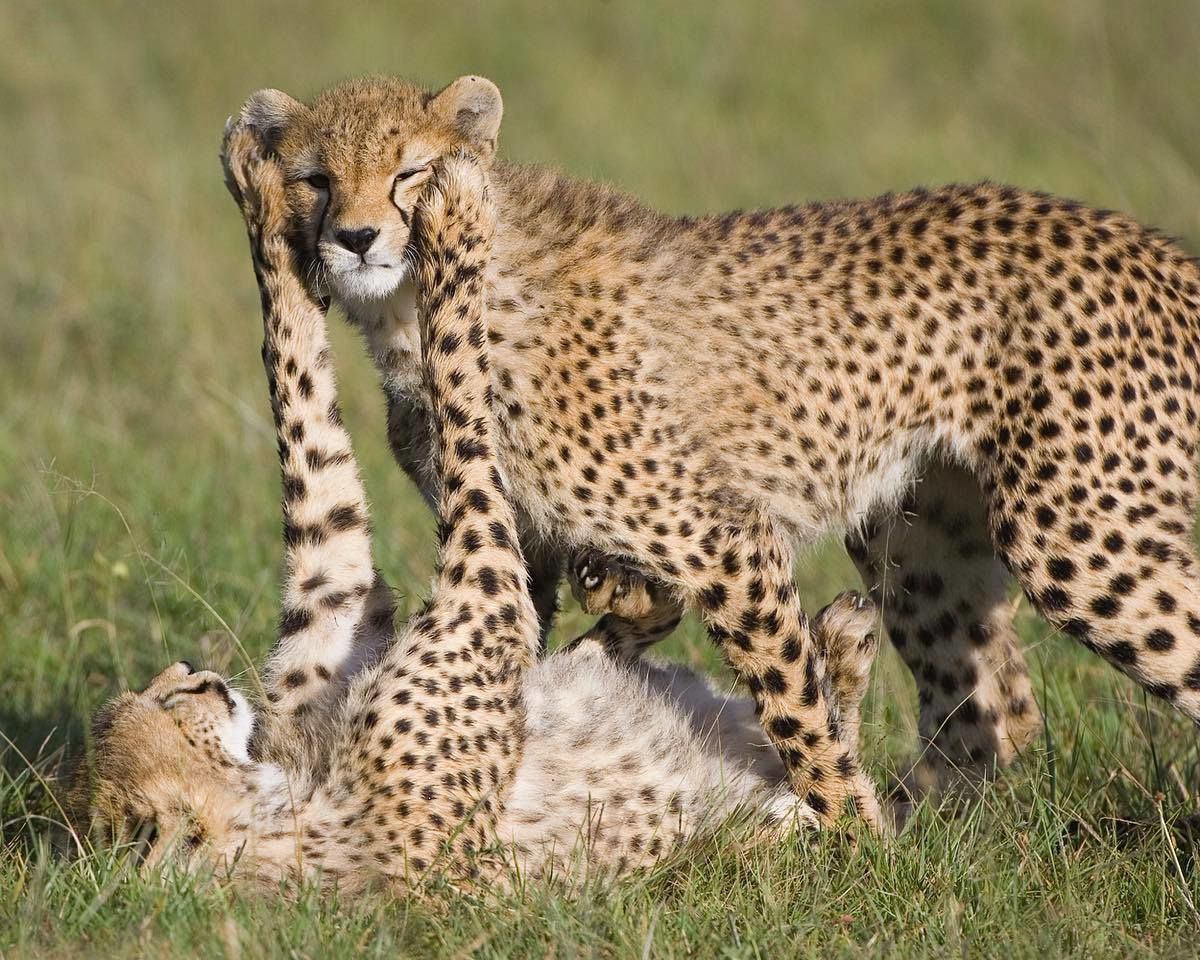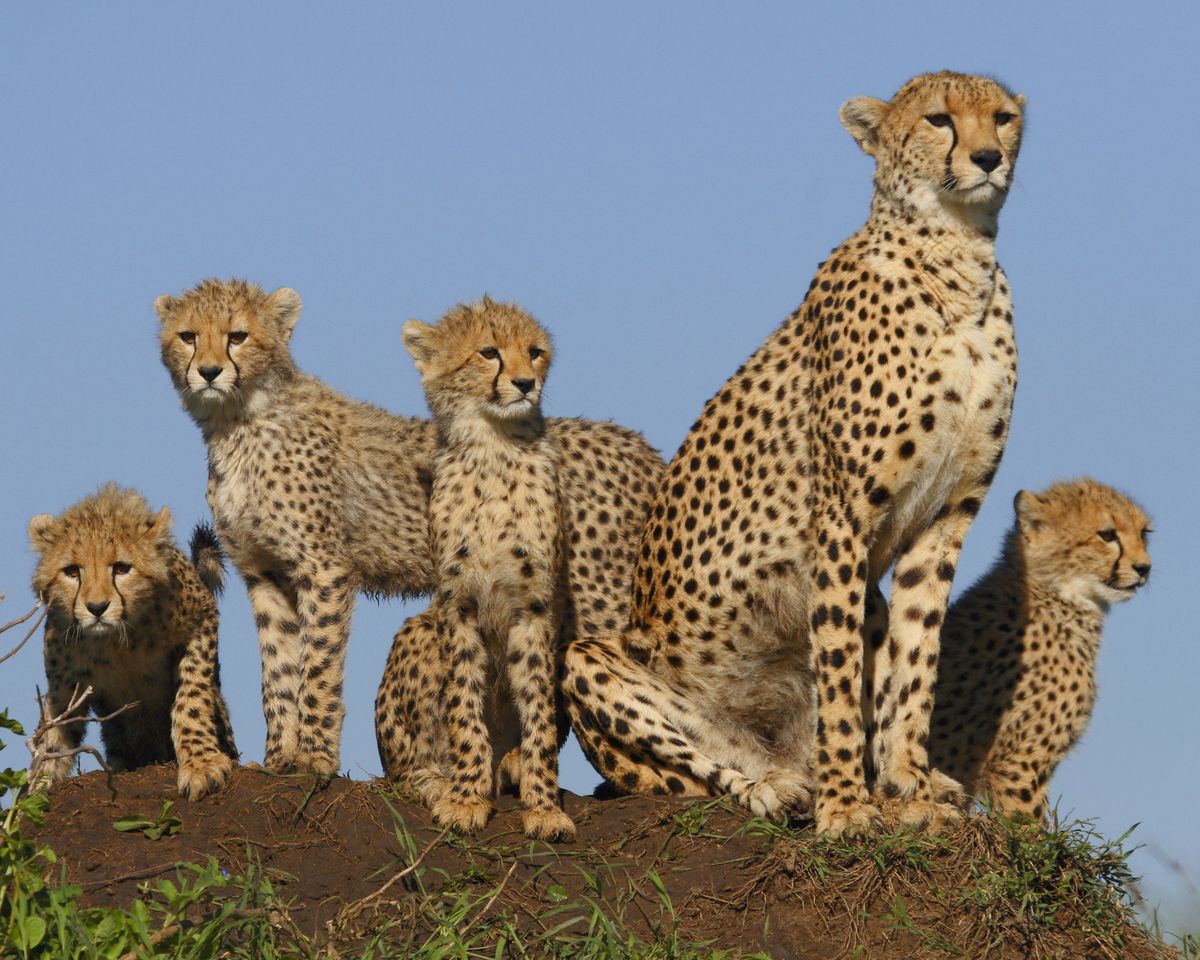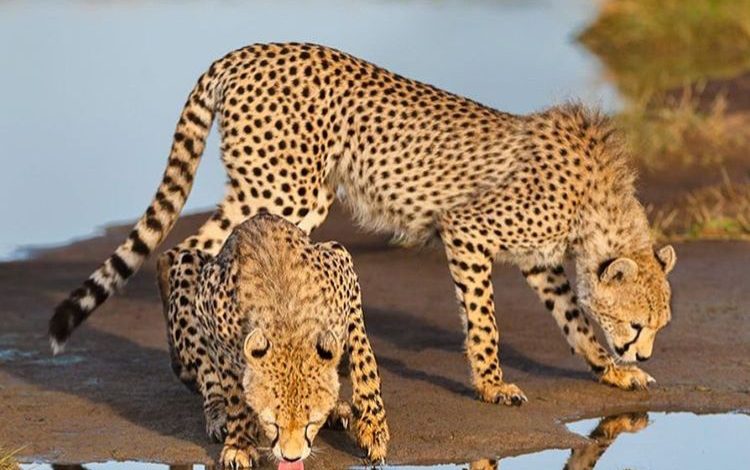What’s the Best Park for Cheetahs in Tanzania?
Few wildlife encounters are as breathtaking as seeing a cheetah sprint across the African plains. While Tanzania is home to several large predators, certain parks stand out for cheetah sightings. This guide explores where you’re most likely to spot these elusive cats, the prime seasons, how to plan your trip around them, and why booking through Great Migration Adventure optimizes your experience.

1. Cheetahs and Their Habitat in Tanzania
Cheetahs in Tanzania belong mainly to the Acinonyx jubatus jubatus subspecies, and they favor open savannah and woodland edges where prey is visible. Though once widespread, pressures like habitat loss and human-wildlife conflict mean their populations are now concentrated in specific ecosystems
Several conservation initiatives—including the Serengeti Cheetah Project—track their movements, promote long-term strategies, and support tourism that respects their fragile ecology
2. Serengeti National Park: The Premier Cheetah Destination
Why Serengeti?
The Serengeti ecosystem remains Tanzania’s strongesthold for cheetahs. It offers diverse terrain—open plains, termite mounds, and rocky kopjes—that suits the species’ hunting style. Expert Africa travellers report that in the Serengeti, 7 out of 10 guests see cheetahs.
Best Areas Within Serengeti
-
Eastern Serengeti and Namiri Plains: These areas are highly regarded for regular sightings, including known breeding females and cubs. The ecosystem was once closed to visitors to aid cheetah recovery and now offers guided experiences that maximize sighting opportunities.
-
Central Serengeti (Seronera): Widely visited and offering reliable game-viewing over the dry season, this zone hosts frequent cheetah encounters across open grasslands.
-
Northern Serengeti (Lamai Triangle): Less crowded, dramatic vistas with termite mounds and acacia trees, frequent cheetah movements, especially outside the Great Migration season.
3. Ruaha National Park: A Hidden Gem

While Ruaha doesn’t match Serengeti in sheer frequency, it offers authentic, low-tourism cheetah experiences. The Ruaha–Rungwa ecosystem spans vast miombo woodlands which, though dense, still support cheetah populations.
-
Visitors have noted regular sightings near the Great Ruaha River and Mwagusi escarpments.
-
Population density is low, but wild behavior is preserved, offering deep insight into cheetah ecology.
4. Tarangire, Ngorongoro & Other Parks

-
Tarangire National Park: Offers occasional cheetah sightings, particularly along the Silale Swamp and river plains. Overlooked by many, this park also delivers lions, elephants, and unique baobab landscapes.
-
Ngorongoro Conservation Area: The crater floor occasionally hosts cheetahs among dense populations of other predators, though sightings are less common than in Serengeti.
-
Ruaha and Katavi National Parks: Known for low tourist numbers and healthy carnivore populations. Katavi houses cheetahs among hippo herds and buffalo in remote lake regions; however sightings remain rare.
-
Selous/Nyerere National Park: Cheetah presence is highly unlikely; extensive surveys from 2020–22 found no evidence of resident populations.
5. When to Visit for the Best Cheetah Sightings
Dry Season (June–October)
Predators and prey congregate around waterholes; sparse vegetation increases visibility. Cheetah hunting is more active during cooler mornings and evenings .
Green/Calving Season (January–March)
Newborn wildebeest & zebra calves attract predators. Though greenery is dense, this period can yield dramatic cheetah scenes on Ndutu plains or Eastern Serengeti .
Shoulder Season (May & November)
Fewer visitors, mild climate, and unpredictable but beautiful sightings—especially in eastern Serengeti and Ruaha.
6. Why Serengeti Stands Out for Cheetahs
-
Consistently abundant sightings, particularly in Namiri Plains and Seronera .
-
Habitat suited to cheetah lifestyle—vast, flat plains, termite mounds for lookouts, and short grass for hunting speed.
-
Migration dynamics create dense prey populations that support high predator density, including cheetahs.
-
Serengeti has a robust wildlife conservation and tourism infrastructure encouraging long-term sighting opportunities .
7. Planning Your Safari: Practical Tips
-
Spend at least 3–4 nights in cheetah hotspot regions (Serengeti eastern or central zones) to maximize search time .
-
Opt for early morning and late afternoon game drives, when cheetahs are most active.
-
Pair Eastern Serengeti with Northern circuit to see migration plus cheetahs with fewer visitors.
-
Stay at photography-friendly camps such as Namiri Plains Camp, Nimali Central Serengeti, or Four Seasons in Serengeti for added access and comfort .
8. Why Book with Great Migration Adventure?
Local Field Knowledge
Our guides are deeply familiar with cheetah territories—especially Namiri Plains and Seronera. We stay connected with research updates and game scout networks.
Customized Itineraries
Whether you want central, eastern, or northern Serengeti time, we tailor your safari to your interests—photography, big cat focus, or general safari. Day-by-day flexibility ensures you’re in prime areas at prime times.
Sustainable, Low-Impact Lodging
We partner with eco-camps and lodges that practice ethical tourism—like Namiri Plains Camp, which supports the Serengeti Cheetah Project while minimizing disturbance .
Seamless Support
From timed permits and internal flights to visa advice and health guidance—our 24/7 assistance and detailed planning take the guesswork out of safari travel.
9. Sample 10-Day Cheetah-Focused Itinerary
Days 1–3: Central Serengeti (Seronera/Nimali) – diversify time within known cheetah areas.
Days 4–5: Eastern Serengeti (Namiri Plains) – extended game drives with researcher briefings.
Day 6: Optional fly-out to Ruaha for remote cheetah experience.
Days 7–8: Ruaha National Park – explore wide-open plains and remote sightings.
Days 9–10: Optional Ngorongoro visit or a lodge-based relaxation extension.
10. Conservation and Ethical Viewing
Your visit helps support cheetah conservation programs like the Serengeti Cheetah Project, which tracks individual cats, promotes habitat linkages, and works with local communities to mitigate conflict .
We emphasize ethical guide practices—no baiting, maintaining respectful viewing distances, and educating guests on cheetah behavior and conservation.
11. Frequently Asked Questions
Q: Can I see cheetahs outside Serengeti?
A: While rare, sightings in Ruaha and sometimes Tarangire are possible—but Serengeti remains your most reliable option .
Q: Is cheetah-watching possible during wet season?
A: Yes—especially in calving regions like Ndutu or Eastern Serengeti. But you’ll trade visibility for lush backdrops (though higher wildlife density).
Q: Are cheetahs endangered in Tanzania?
A: Cheetahs face habitat loss and conflict, and their population is vulnerable. Eastern Serengeti remains one of the healthiest strongholds thanks to research and conservation efforts.
Q: Can I photograph cheetahs from close range?
A: Often sightings remain at distance—good binoculars or long lenses help. But in places like Namiri Plains, your vehicle can often be within 50–100m for prime photography.
12. Testimonials from Great Migration Adventure Guests
“I never expected to spend hours observing a cheetah coalition on Namiri Plains—it was mesmerising.”
—Julia B., UK
“Combining Serengeti with Ruaha allowed us to escape crowds and capture a mother cheetah with cubs in natural habitat. It was magical.”
—Carlos & Marta, Spain
13. Final Thoughts
If you’re dreaming of tracking the fastest land animal across Africa’s iconic landscapes, your best chances lie in Serengeti National Park—especially its eastern and central zones. Ruaha offers a deeper wilderness alternative with fewer crowds but still potent predator life.
When you book with Great Migration Adventure, we amplify your chance for encounters with cheetahs—through expert planning, tailored itineraries, local conservation partnerships, and boots-on-the-ground expertise.









